The Samsung Galaxy S9 and S9+ Review: Exynos and Snapdragon at 960fps
by Andrei Frumusanu on March 26, 2018 10:00 AM ESTThe Snapdragon 845 - A Quick Recap
Starting with Qualcomm's Snapdragon 845 – we already extensively covered during the December launch announcement as well as Qualcomm’s traditional performance preview most recently in February.
| Qualcomm Snapdragon 845 vs 835 | |||
| SoC | Snapdragon 845 | Snapdragon 835 | |
| CPU | 4x Kryo 385 Gold (A75 derivative) @ 2.8GHz 4x256KB L2 4x Kryo 385 Silver (A55 derivative) @ 1.77GHz 4x128KB L2 2MB L3 @ 1478MHz |
4x Kryo 280 Gold (A73 derivative) @ 2.45GHz 2MB L2 4x Kryo 280 Silver (A53 derivative) @ 1.90GHz 1MB L2 |
|
| GPU | Adreno 630 @ 710MHz | Adreno 540 @ 670/710MHz | |
| Memory | 4x 16-bit CH @ 1866MHz LPDDR4x 29.9GB/s 3MB system cache |
4x 16-bit CH @ 1866MHz LPDDR4x 29.9GB/s |
|
| ISP/Camera | Dual 14-bit Spectra 280 ISP 1x 32MP or 2x 16MP |
Dual 14-bit Spectra 180 ISP 1x 32MP or 2x 16MP |
|
| Encode/ Decode |
2160p60 10-bit H.265 720p480 |
2160p30 (2160p60 decode), 1080p120 H.264 & H.265 |
|
| Integrated Modem | Snapdragon X20 LTE (Category 18/13) DL = 1200Mbps 5x20MHz CA, 256-QAM UL = 150Mbps 2x20MHz CA, 64-QAM |
Snapdragon X16 LTE (Category 16/13) DL = 1000Mbps 3x20MHz CA, 256-QAM UL = 150Mbps 2x20MHz CA, 64-QAM |
|
| Mfc. Process | 10nm LPP | 10nm LPE | |
The Snapdragon 845 is the first SoC to adopt ARM’s new DynamIQ CPU topology and cores. The new configuration includes a larger coherent cluster instead of separate clusters for the little and big cores. While this new configuration allows for better performance and core configuration scaling, Qualcomm opted to continue the traditional 4+4 CPU set that we’ve seen with the Snapdragon 835. The performance core comprise of the Kryo 385 Gold cores which are derivative of ARM’s Cortex-A75’s and are running at up to 2803MHz. The efficiency cores are the Kryo 385 Silver cores which are based on ARM Cortex-A55’s and are running at up to 1766MHz.
Among the big improvements of the Snapdragon 845 includes the introduction of the new X20 modem which supports LTE UE Category up to 18 in the downstream and Category 13 in the upstream.
The Snapdragon 845 is also the first SoC from Qualcomm to adopt the new in-house designed Adreno 630 which marks a generational leap in the graphics department. I can confirm that Qualcomm continues the trend of trying to maintain clock frequencies between generations and the Adreno 630 in the Galaxy S9 comes in at 710MHz – a bump from the 670MHz in the Galaxy S8 but the same as other Snapdragon 835 devices. We’ll be having a more in-depth evaluation of the new Adreno in the GPU part of the review later on.
Unique for Android SoCs is also the first time introduction of a new system wide “L4” cache 3MB in size which is meant to reduce system memory access not only from the CPUs but also every other IP block in the SoC, thus gaining power efficiency.

Snapdragon 845 Floor Plan. Image Credit TechInsights
Our friends at TechInsights this week were able to publish a die shot of the Snapdragon 845, and it’s interesting to see the changes compared to the Snapdragon 835. Because the Snapdragon 845 is manufactured on Samsung’s 10LPP process, there aren’t any new density improvements over last year’s 10LPE Snapdragon 835. Naturally because the new SoC includes new IP and improvements, die size has increased from 72.3mm² to around 94mm².
The biggest contributor of this increase will be the new system cache, which is part of the area that TechInsights (erroneously in my belief) marked as the DSP. Here we four new blocks to what I think are simply four banks of SRAM and their arbitration logic and their responsibility is divided among the four memory controller channels.
On the CPU side we see the new DSU lying in-between the A55 cores with the A75 cores spread around the little cores and the DSU. The 2MB L3 cache a big unified block alongside the DSU and little cores. Based on TechInsights preliminary low-res picture, the CPU complex comes in at 11.39mm² with an A75+L2 core coming in at 1.57mm² and the A55+L2 coming in at ~0.53mm².
The Adreno 630 seems to have consolidated a lot of its inner components. We still see a clear 4-shader core arrangement, however instead of having one adjacent block next each shader core we now see a larger block shared among two shader cores. The shader cores are also vastly improved as they have doubled the ALU pipelines. On the die shot it looks like the GPU actually only has 2 separate units, and this is confirmed by the drivers of the Snapdragon 845: instead of a quad-core Adreno 540, the Adreno 630 is a dual-core GPU. The texture units/ROPs/GMEM blocks have also been consolidated from four units down to two larger blocks, with a 50% increase in texture throughput. Overall there’s been extensive rework throughout the GPU resulting in a “simplified” configuration that seems to be forward-looking in terms of future scalability. Qualcomm has also achieved this in a mere ~10.69mm², making the Adreno 630 the by far smallest high-end GPU in the mobile space by a significant margin.
In terms of CPU performance, the new Kryo 385 Gold cores shouldn’t veer off much from ARM’s Cortex A75 microarchitecture. We’ve extensively covered the improvements in last year’s Tech Day reveal article. Overall the Cortex A75 is a strong successor to the A73 but refines the microarchitecture in terms of memory performance and especially floating point performance.
Following the performance preview of the Snapdragon 845 in February I noted that I was a bit disappointed in the end-performance of the CPUs as they did not reach ARM’s quoted performance targets. I want to revisit this a bit attempt to try to explain the different factors that lead to it.
Firstly ARM’s performance figures were projected on a configuration of A75 coupled with 512KB L2 caches. Qualcomm opted to use 256KB caches which may account for a few percentages in performance.
The new memory subsystem of the Snapdragon 845 also isn’t without faults: the initial increased DRAM memory latency that we measured on Qualcomm’s QRD845 reference platform is definitely carrying over to retail consumer devices, as the Galaxy S9 exhibits the same behaviour. This is quite a disappointing characteristic to find as it will counteract a lot of performance gains – especially in memory latency sensitive workloads – which we’ll confirm later on in the SPEC benchmarking portion.
Finally, one big question that Qualcomm teased about in its announcement event, is the configuration of the DSU. Qualcomm explained that the CPU complex was powered by three voltage planes – and I can confirm that my initial assessment was correct as two frequency and voltage planes power the little and big cores, and the third voltage plane powers the DSU/L3 and the cDSP (On of the various DSPs). The frequency here tops out at 1478MHz which is a tad lower than I had expected.
When reading ARM’s TRM (Technican Reference Manual) of the DSU, we see one particular claim regarding the recommended clocks of the L3 in relation to the CPU clocks:
"SCLK frequency affects the L3 hit latency and, therefore, it is important for achieving good performance. For best performance, ARM recommends running SCLK as close to CORECLK[CN:0] frequency as possible. However to reduce dynamic and leakage power, targeting a lower frequency might be required. Running SCLK at least approximately 75% of the CORECLK[CN:0] frequency might give an appropriate balance for many systems."
The Snapdragon’s big cores run at up to 2803MHz so running the L3 at up to only 1478MHz represents only 52% of the peak frequency. We’re not able to judge what kind of performance impact Qualcomm’s configuration has, but it looks like there will be some sort of degradation compared to an optimally run system.
All in all – the reduced 256KB cache, DRAM memory latency degradation as well as the more conservative maximum frequency of the L3 all can add up and may explain why the Snapdragon 845 wasn’t able to quite reach ARM’s projections on performance of the new core.
In general the Snapdragon 845 looks like a great SoC on paper – there should be good CPU improvements as well as excellent GPU leaps, but that’s no news given that we knew that from the performance preview. The only remaining question is power efficiency, which we’ll be looking at shortly after we cover the competition’s SoC.


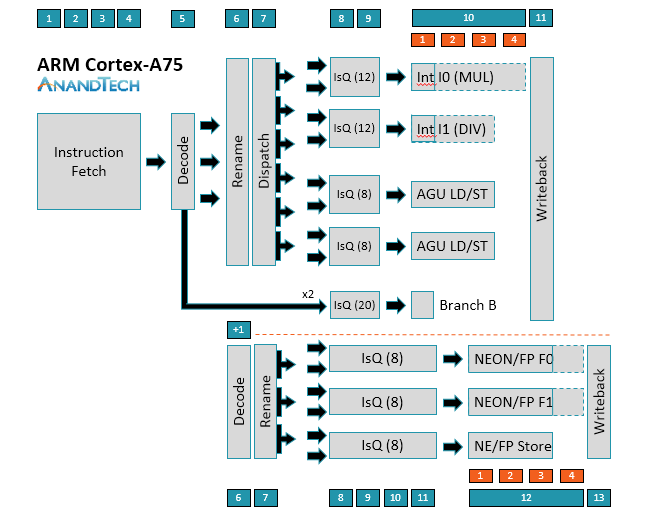
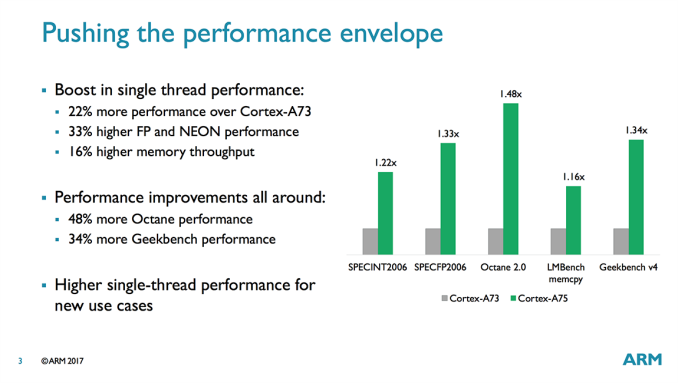
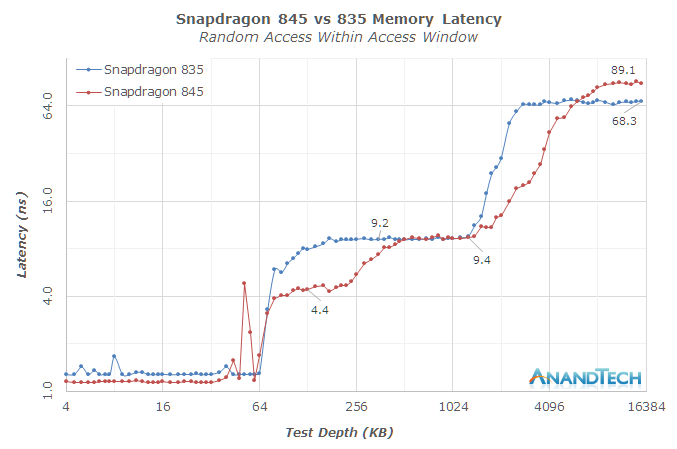
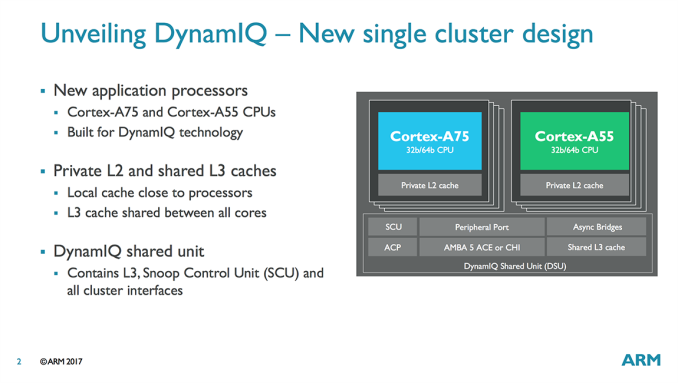
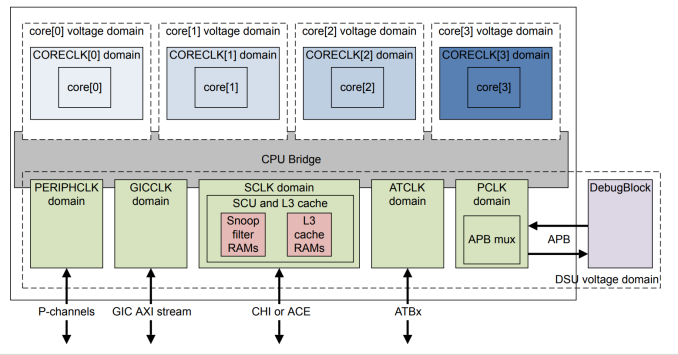








190 Comments
View All Comments
Icehawk - Friday, April 6, 2018 - link
I don’t think they have an editor or have another one of the guys proofread - it’s always a bit harder to do your own editing/I don’t get the impression that they are the best writers per se. Some of it is the haste in which they have been posting articles recently half finished with multiple updates. I don’t think they have the funding or perhaps management, not sure what happened but AT definitely has been on a downward slide since Anand himself left. Still great in-depth articles and good tech though, I’m not being a hater just honest with my opinion. This is still my first or second stop on my daily tech reading.North01 - Monday, March 26, 2018 - link
> It’s curious to see that both the Galaxy S9’s showcase what seems to be worse sustained performance even though efficiency should have gone up – it’s possible that Samsung decided to limit the S9 to lower sustainable TDPs for cooler devices or longer battery life. We’ll have to verify this theory in another Snapdragon 845 device in the future – the sustained GPU performance might be higher in that case.This is something I'm really curious about.
Robikonobi - Monday, March 26, 2018 - link
What is the difference between auto vs pro auto? I understand that in pro auto you can choose the aperture f1.5 vs f2.4, but why would pro auto produce more acurate exposure as compared to regular auto (as shown in the purple power macro pictures)? In pro auto, the only variable is the difference in aperture, but yet both pro auto shots (in f1.5 and f2.4) produce more accurate exposure than the full auto mode. Any idea why?Andrei Frumusanu - Monday, March 26, 2018 - link
I'm not privy to Samsung's camera algorithms. It is the way it is because it so might be as well the best explanation.lilmoe - Wednesday, March 28, 2018 - link
I found this out by chance, but I'm almost 100% positive that sensor image stacking multi-frame noise reduction are ONLY being utilized in full Auto, because those enhancements are only applied in jpegs. When you switch to pro mode, the app switches all that of because it assumes that RAWs are needed.You're getting a "different" exposure because you're only getting 1 unprocessed image, and a "secondary"/complementary jpeg for fast sharing.
robertkoa - Tuesday, July 3, 2018 - link
Did you try the Pro Mode and just move down minus .5 to .7 on FStop values ?axi6ne8us - Monday, March 26, 2018 - link
Since it has improved stereo speakers and headphone jack, does it include a 32bit DAC with amplifier?robertkoa - Tuesday, July 3, 2018 - link
I have read that it does.And you get premium audio in BOTH versions of CPU.
Remember when you got the premium Wolfson Audio Chip only on Exynos Models previously ?
It's not Wolfson any more but supposedly up to 32bit 196K although not 100% sure- something I read .
Dolby Atmos is great though IMO.
It would be nice on the fantasy S10 Pro in addition to a 4000MAH battery to have a way to digitally input audio at full resolution ...like a Protools Mix etc.
lopri - Monday, March 26, 2018 - link
What an incredible review. It was exhausting to read but in the end it was more than worth it. The degree of thoroughness and precision the review went for is simply hard to believe. The camera section in particular is particularly enlightening in more than one regards. The perfection the review aims for while comparing more than a dozen of phones is never before seen in a smartphone review, and the beautiful scenery the reviewer chose not only makes it easier for readers to compare the results themselves, but also gives a hint of the reviewer's taste, which, I think, adds to the persuasiveness of the reviewer's opinion. I found myself in agreement with the reviewer's assessments as I followed through one scenery at a time. (with the exception of Night Scenic 1, where I thought the S9 did better than the competition) I am also grateful the review did not waste anyone's time nor degraded itself with silly stuff like AR Emoji or make-up picker (?) that other reviewers are seemingly delighted to cover without self-awareness.Lavkesh - Monday, March 26, 2018 - link
While the rest of the so called reviewers are going gaga over the geekbench scores of the Exynos, the real deal, as always, explained better on Anandtech. With such basic performance handicaps, I sometimes wonder whether Samsung should be spoken in, in such high regard in the Android space. Their software is poor, the only thing that they are good in, the hardware, turns out isnt as good as thought and yet no one seems to have problem with these kirf devices being priced almost on a similar level as the iPhone. As always Samdung does not know it any better.